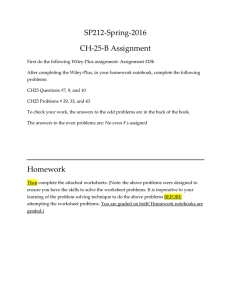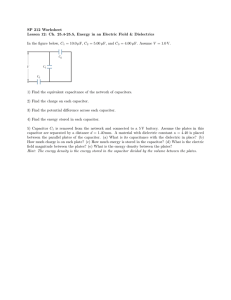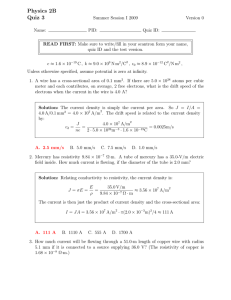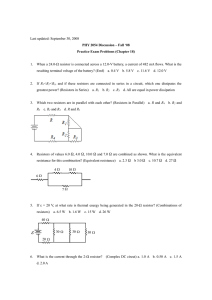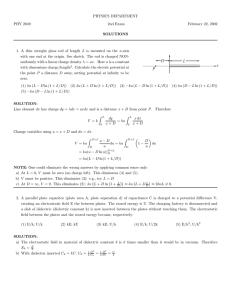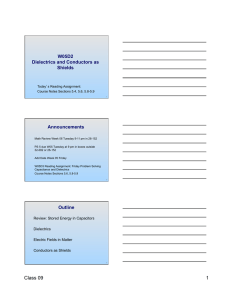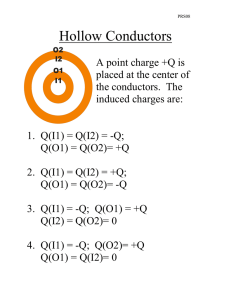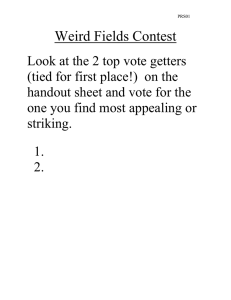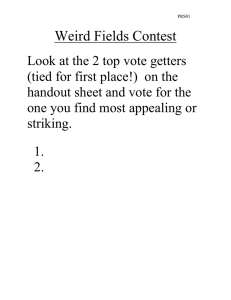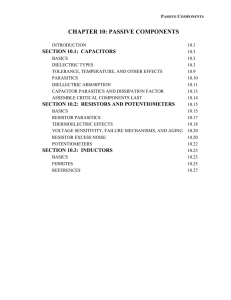Print your name clearly: Signature:
advertisement
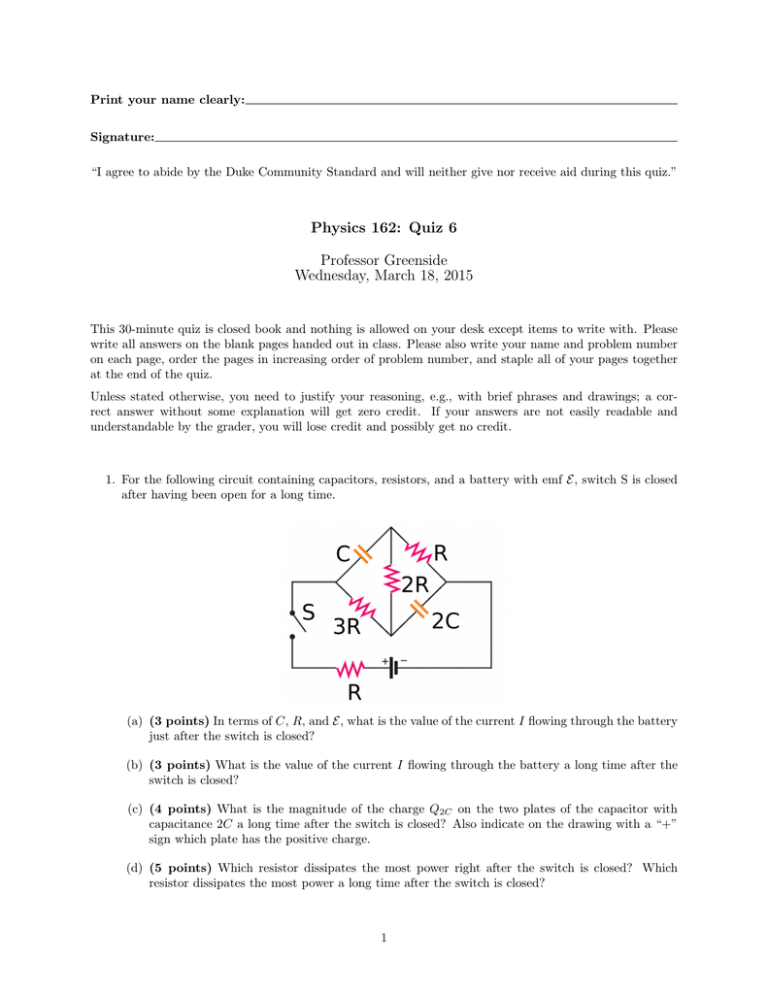
Print your name clearly: Signature: “I agree to abide by the Duke Community Standard and will neither give nor receive aid during this quiz.” Physics 162: Quiz 6 Professor Greenside Wednesday, March 18, 2015 This 30-minute quiz is closed book and nothing is allowed on your desk except items to write with. Please write all answers on the blank pages handed out in class. Please also write your name and problem number on each page, order the pages in increasing order of problem number, and staple all of your pages together at the end of the quiz. Unless stated otherwise, you need to justify your reasoning, e.g., with brief phrases and drawings; a correct answer without some explanation will get zero credit. If your answers are not easily readable and understandable by the grader, you will lose credit and possibly get no credit. 1. For the following circuit containing capacitors, resistors, and a battery with emf E, switch S is closed after having been open for a long time. (a) (3 points) In terms of C, R, and E, what is the value of the current I flowing through the battery just after the switch is closed? (b) (3 points) What is the value of the current I flowing through the battery a long time after the switch is closed? (c) (4 points) What is the magnitude of the charge Q2C on the two plates of the capacitor with capacitance 2C a long time after the switch is closed? Also indicate on the drawing with a “+” sign which plate has the positive charge. (d) (5 points) Which resistor dissipates the most power right after the switch is closed? Which resistor dissipates the most power a long time after the switch is closed? 1 2. (14 points) Just as capacitors often are labeled by a maximum allowed voltage difference beyond which they become irreversibly damaged, resistors are labeled by a maximum allowed power dissipation in watts (W), above which the resistors will become irreversibly damaged. Given that the 2 Ω resistor in the circuit below has a power rating of 1/4 W (a typical rating for inexpensive carbon resistors), does this 2 Ω resistor exceed its power rating? 3. After being disconnected from a battery, a charged capacitor often does not retain its charge because most dielectric materials separating the capacitor plates have a small but finite resistivity ρ that allows the capacitor to discharge through the dielectric. To explore this point, consider a charged parallel plate capacitor that consists of two large metal square parallel plates of area L2 separated by a small distance d ≪ L, with charges ±Q on the plates such that the space between the two plates is filled with a material that has dielectric constant κ and resistivity ρ. (a) (4 points) Calculate the time constant τ = RC for this circuit in terms of given parameters. (b) (4 points) Qualitatively plot the current I(t) flowing through the dielectric versus time t, with t = 0 corresponding to the fully charged capacitor. (c) (4 points) In terms of known parameters, give an explicit mathematical expression for the current I(t) flowing through the dielectric as a function of time, with t = 0 corresponding to the fully charged capacitor. Some possibly useful equations. ∫ Vb − Va = − b E • dl, Eplane = a I= 1 ∆V, R L R=ρ , A Rseries = R1 + R2 , σ , 2ϵ0 Edielectric = Evacuum , κ 1 1 1 = + , Rparallel R1 R2 2 Q = C∆V. (1) P = IV = I 2 R = V 2 /R. (2)
